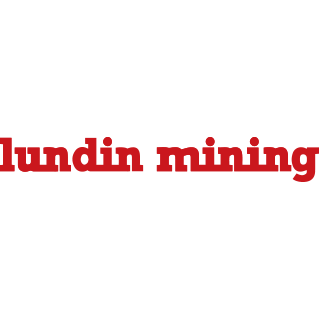Global geopolitics has been a tremendous source of uncertainty in 2025. Compounding the uncertainty has been questions about the short-term and permanent impact these changes will have on the real economy, particularly on trade and private-sector investment. Major forecasters have been revising their forecasts, as the underlying assumptions about the impact of US tariffs change. For the EU, growth projections were considerably revised downward in the spring (European Commission 2025), but now the consensus seems to be shifting, recognising a better than expected economic performance in the short term. The lack of strong EU retaliation on US tariffs, the partially reduced uncertainty due to the trade agreements, the potential opportunities emerging from a multi-polar system, and a boost to public investment (for defence) are leading most institutions to revise their growth expectations slightly upwards (Lagarde 2025; OECD 2025, IMF 2025). But what is happening to investment by European firms? How are they responding to the changed trading environment and other political shifts, such as the Trump administration’s position on climate change? How do the reactions of European firms differ from those in the US?
The 2025 edition of the European Investment Bank Investment Survey (EIBIS) sheds some light on these questions (EIB 2025). Conducted annually since 2016, the EIBIS is a unique survey of approximately 13,000 firms across all 27 EU members, with an additional sample from the US. The survey collects data on the characteristics and performance of firms, past investment activities and future plans, sources of finance, financing issues, and other challenges such as climate change and digital transformation. Interviews for the 2025 edition of the survey were carried out over the summer.
Investment by firms has proved resilient so far
After several years of acceleration, the investment appetite of European and American firms is weakening (Figure 1). However, instead of the feared collapse, investment seems to be stabilising as firms continue to invest. The share of EU firms investing remained roughly stable at 86%, compared with 87% in last year’s survey. A marginally higher share of EU firms still expects to increase rather than decrease investment in 2025, although this indicator also points to an easing of investment growth. The pattern in the US is broadly similar, but US firms’ expectations have been revised down from a much more buoyant level.
Figure 1 Investment cycle and evolution of investment expectations
Source: European Investment Bank – EIBIS 2021-2025.
Investment activities differ on the two sides of the Atlantic. While EU firms are more likely to invest in replacing capacity, US firms are looking to expand. In the EU, firms have devoted a significant portion of their investment (35%) to intangible assets (such as research and development, training, and software), investing less in land, buildings, and infrastructure than US firms (17 versus 22%). Over the next three years, EU firms will continue to prioritise investment that replace rather than expand capacity, with the share of firms investing to expand operations 11 percentage points below that of the US (26% of EU firms versus 37% of US firms).
While EU firms continue to invest, they have a negative outlook on the political and regulatory environment and the overall economic climate, with more firms expecting the situation to deteriorate rather than improve in the next 12 months. They also have a balanced view of the business prospects in their sector (Figure 2). In the US, firms are neutral on the political climate (on balance) and somewhat positive on business prospects and the general economic climate.
Figure 2 Firm perceptions of short-term investment drivers and constraints
Source: European Investment Bank – EIBIS 2018-2025.
Note: (*) Net balance is the share of firms expecting an improvement minus the share of firms anticipating a deterioration. Negative values thus imply that more firms expect a deterioration than an improvement.
Adjusting supply chains: US firms focus on domestic sources while EU firms balance efficiency and resilience
The trade views of EU and US firms differ widely, as well as the economic impacts across various countries (Kawasaki 2025). Among firms engaged in trade, US firms are markedly more concerned about changes in customs and tariffs than EU firms (77% versus 48%). The share of concerned firms in the US has doubled, while in the EU the increase has been marginal (Figure 3). Tariffs have dominated the news, but compliance with new regulations, standards, or certifications remain a concern for many firms. Concerns about other supply chain disruptions have continued to ease in the EU and the US.
Figure 3 Obstacles related to external trade
Note: * Base: All firms; ** Base: All importers and exporters
Source: European Investment Bank – EIBIS 2024-2025.
The tariff shock immediately affected US supply chains, leading firms to look for domestic suppliers and retrench on trade. With government policies that encourage domestic production and expectations that tariffs will make imports more expensive, a relatively high share of US firms are increasing inventories, substituting imported goods for domestic ones, and diversifying the countries from which they import. EU firms, by contrast, are adopting a more measured approach, balancing efficiency and resilience in their supply chains: only 7% of European firms are engaging in import substitution strategies, reducing their share of imported goods and services, while 19% are diversifying the number of countries from which they import.
Figure 4 Changes in sourcing strategy
Note: Base: All firms; *Base: All firms that import
Source: European Investment Bank – EIBIS 2024-2025.
Green transition: EU firms stay the course
EU firms appear more aware of the consequences of the net zero transition than their American counterparts (Figure 5). When looking at transition risks, EU firms are aware of risks (particularly in Eastern Europe and in some of the Central European countries) and slightly more aware of the opportunities the transition presents (particularly in Northern Europe).
As a result, 92% of EU firms have taken action to reduce greenhouse gas emissions, a much higher share than in the US across various investment categories. A higher share of EU firms is investing in waste minimisation, energy efficiency, sustainable transport, renewables, and green innovation. EU firms, particularly larger ones, are also more likely to have performed energy audits or to have their own greenhouse gas emission targets. One notable fact is that the share of US firms that see the transition to a net zero emission economy as a risk has significantly declined since 2024.
Figure 5 Firm perceptions of the impact of the green transition over the next five years
Note: Base: All firms (excluding don’t know/refused responses)
Source: European Investment Bank – EIBIS 2024-2025.
Firms are more aware of the physical risks associated with climate change and are slowly starting to act on climate adaptation. On both sides of the Atlantic, the share of firms faced with costs from extreme climate-related events is high: 68% in Europe, and 64% in the US. The share of firms acting to deal with physical risks has increased steadily and is relatively similar (55% in the US, 53% in the EU), however, US firms are more likely to have implemented adaptation strategies or investments. The number of firms investing in adaptation is increasing.
EU firms are investing in digitalisation and AI, but could benefit from applying new technologies more widely
EU firms have accelerated their adoption of advanced digital technologies to the extent that they their adoption rate now matches those of US firms. This trend is particularly strong in large firms and in the manufacturing sector. A new question in this the EIBIS 2025 survey shows that the adoption rate of generative AI technology is roughly the same on both sides of the Atlantic, at 37% in the EU versus 36% in the US. However, US firms that use big data or AI technologies tend to apply them across more business areas than their European counterparts, highlighting a continuing challenge for adoption in Europe (Figure 6).
Figure 6 Business areas in which AI tools are used (% of firms)
Source: European Investment Bank – EIBIS 2024-2025.
Simplification and integration of the EU Single Market present opportunities
The 2025 survey underlines the importance of simplifying regulation, procedures and market access in the EU. Time spent meeting regulatory requirements is significant for EU firms, with the cost estimated at some 1.1% of companies’ turnover, and as much as to 1.8% among small and medium enterprises.
Deepening the Single Market remains equally vital to enhancing the EU’s competitiveness: 62% of EU firms perceive the EU market as fragmented for their main product, a share unchanged from 2024. Many barriers remain a drag on investment by firms. Uncertainty remains the most frequently cited barrier, weighing even more on EU than US firms (83% of EU firms are concerned, compared with 68% of US firms). Availability of skills comes second for EU firms (79%), followed by energy costs (75%) and business regulation (69%). Energy costs remain much more of an impediment for firms in the EU than in the US.
Alongside simplification and market integration, policy incentives also matter. Especially in a period in which policy support needs to balance the strategic priorities with considerations related to debt sustainability (Bouabdallah et al. 2025). Overall, 16% of EU firms that invest were supported by EU policies, compared to 13% among US firms. EU firms have better access to finance at favourable rates than US firms, and comparable access to grants and subsidies. The EIB Investment Report (EIB 2025b), released in March 2025, showed that targeted policy support is more effective. In the EU, policy support tends to be more targeted and ‘greener’ – indeed, policy support is more likely to be linked to a specific objective (61% in Europe, compared with 43% in the United States), with the green economy and innovation being the main policy priorities.
References
Bouabdallah, O, E Dorrucci, C Nerlich, C Nickel and A Vlad (2025), “Time to be strategic: How public money could power Europe’s green, digital, and defence transitions”, VoxEU.org, 29 July.
EIB (2025a), EIB Investment Survey 2025: EU Overview.
EIB (2025b), Investment Report 2024/2025: Innovation, integration and simplification in Europe.
European Commission (2025), Spring 2025 Economic Forecast: Moderate growth amid global economic uncertainty.
IMF (2025), World Economic Outlook Update, July 2025: Global Economy: Tenuous Resilience amid Persistent Uncertainty.
Kawasaki, K (2025), “Economic impact of US tariff hikes: Significance of trade diversion effects”, VoxEU.org, 15 September.
Lagarde, C (2025), “Trade wars and central banks: lessons from 2025”, speech by Christine at the 4th Bank of Finland International Monetary Policy Conference, 30 September.
OECD (2025), OECD Economic Outlook, Interim Report: Finding the Right Balance in Uncertain Times, September.







